Key takeaways:
- Dental X-rays are essential for identifying hidden dental issues, allowing for early detection and timely treatment.
- There are various types of X-rays (bitewing, periapical, panoramic), each serving specific diagnostic purposes.
- The X-ray process involves safety precautions to minimize radiation exposure, ensuring patient confidence in dental care.
- Understanding the value of X-rays can alleviate concerns and reinforce their role in preventive dental health management.
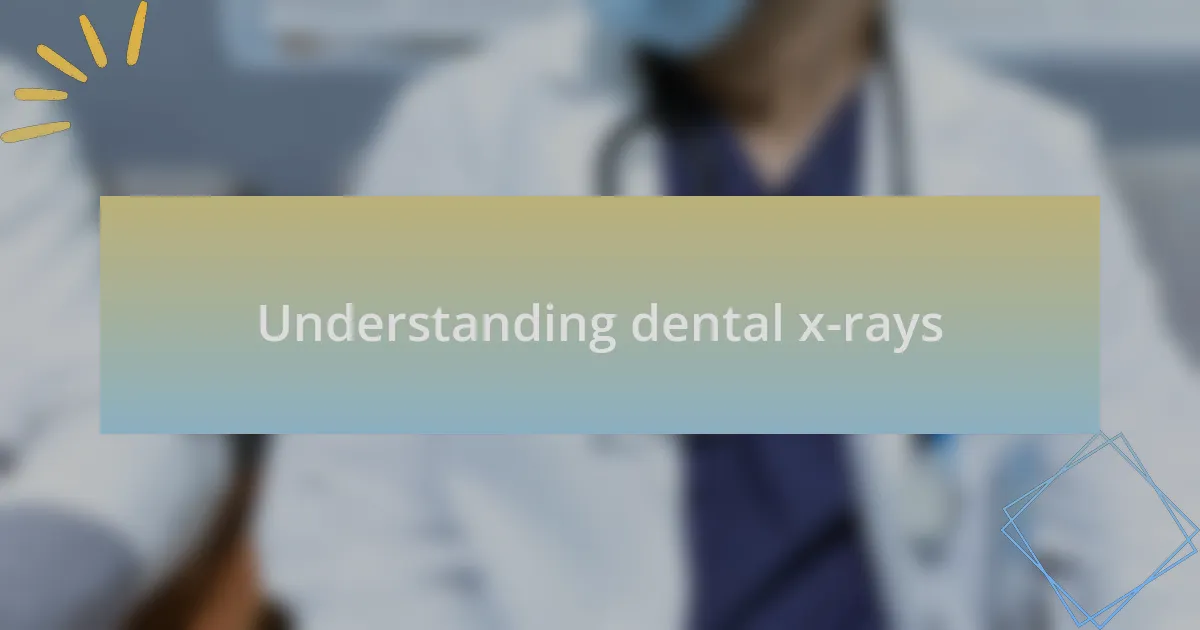
Understanding dental x-rays
Dental X-rays are a crucial tool in modern dentistry, allowing professionals to visualize what lies beneath the surface. I recall my first experience with X-rays during a dental check-up; I felt a mix of curiosity and anxiety as I positioned myself in the machine. But that quick moment of discomfort was reassuring, knowing it would provide valuable information for my dentist.
These images reveal problems that are often invisible during a regular examination, like cavities between teeth or issues with the roots. Have you ever wondered how much you might miss without this technology? X-rays can detect these concerns early, allowing for timely treatment and helping to prevent more serious issues down the line.
It’s also intriguing how they can show the development of wisdom teeth, which can be a real concern for many. I find myself reflecting on how knowledge gained from a simple X-ray can guide decisions about my treatment. It’s fascinating to think that such a small process can have such a significant impact on maintaining our dental health.
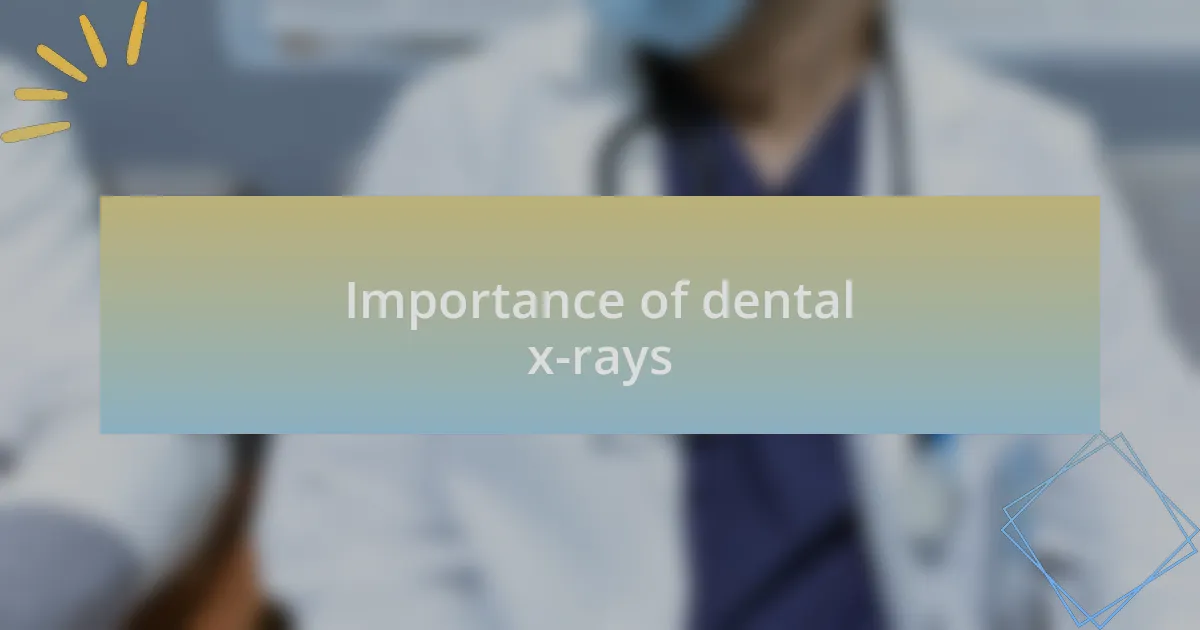
Importance of dental x-rays
Dental X-rays play a pivotal role in identifying underlying issues that might not be apparent during a clinical exam. I remember feeling a sense of relief when my dentist spotted a hidden cavity in an X-ray that I would have never known about otherwise. Without these images, many dental problems could escalate into painful and costly interventions.
The significance of X-rays extends to tracking changes over time, especially for those of us with a history of dental issues. I once had a dentist monitor a developing tooth with periodic X-rays, and it was fascinating to see how much it changed from one visit to the next. Can you imagine managing your dental health without a roadmap guiding you through the ups and downs?
Moreover, they assist in planning for complex procedures like extractions or implants. I distinctly recall discussing my options for dental implants with my oral surgeon, who expertly used my X-ray images to create a tailored treatment plan. This level of precision makes such a difference in the confidence I have in my care, knowing that each step is thoughtfully considered based on tangible evidence.
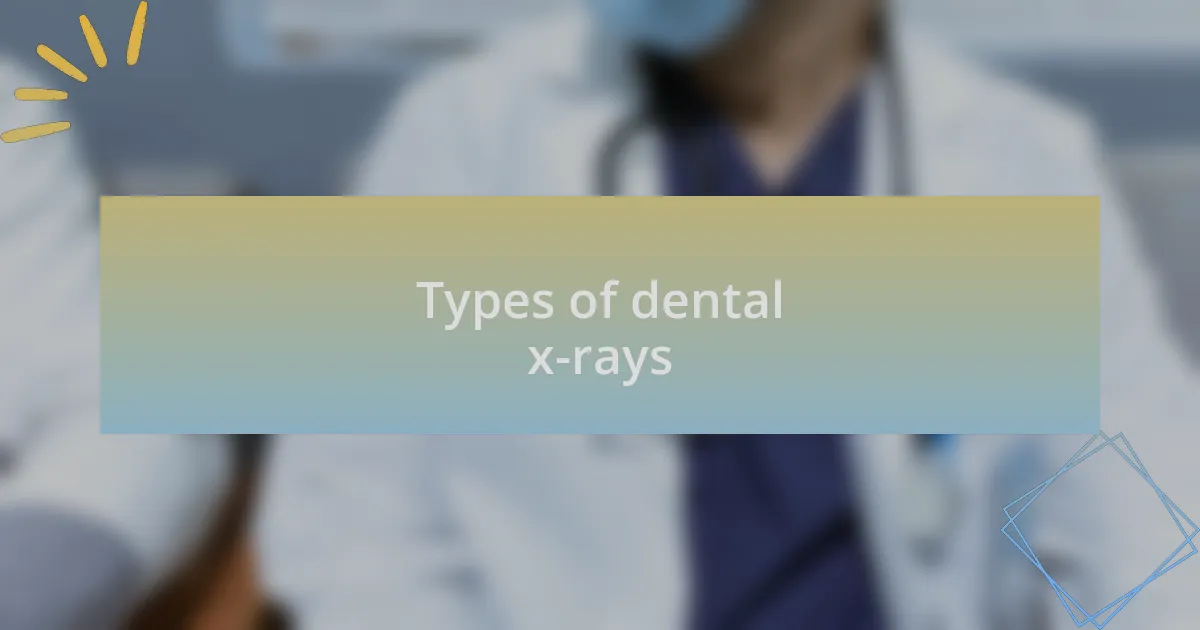
Types of dental x-rays
When it comes to dental X-rays, there are several types, each serving a unique purpose. One of the most common is the bitewing X-ray, which helps detect cavities between the teeth. I still remember my first bitewing experience; it was surprising how a small image could reveal so much about hidden dental issues.
Another essential type is the periapical X-ray, which focuses on a specific area of the mouth, including the roots of the teeth and the surrounding bone. In my case, a periapical X-ray provided crucial insights when I had an ongoing toothache. Seeing the image made it clearer why I needed a root canal, and it was a huge relief to understand the cause of my discomfort.
Then there are panoramic X-rays, which capture a broad view of the entire mouth in one image. This type often feels less invasive, and I recall the moment I first saw my full dental landscape—it was almost like discovering a new world in my mouth! Have you ever had an experience where an image changed your perspective? Panoramic X-rays often do that, allowing dentists to assess jaw issues and impacted teeth all at once.

How dental x-rays are performed
When it comes to performing dental X-rays, the process typically begins with the dental assistant guiding you through the setup. You’ll often be given a lead apron to wear, which helps shield your body from radiation. I remember when I first donned that apron; it made me feel a bit like I was preparing for a secret mission—one where the mission was uncovering the mystery of my teeth!
Next, you’ll position your teeth in alignment with the X-ray machine. For bitewing X-rays, this might involve biting down on a small device that keeps your mouth open. I remember feeling a little anxious during this part, wondering how such a simple action could yield such detailed images. But that brief moment of discomfort is well worth it, as those images can lead to important discoveries about dental health.
Once you’re positioned, the technician will step behind a protective barrier and take the images. The actual exposure lasts only a fraction of a second, yet it can unveil a treasure trove of information. I still vividly recall the moment I saw my own dental X-rays for the first time; it felt like peering inside a hidden realm where everything was laid bare. How fascinating is it that with just a simple snapshot, a clear picture of dental health emerges?
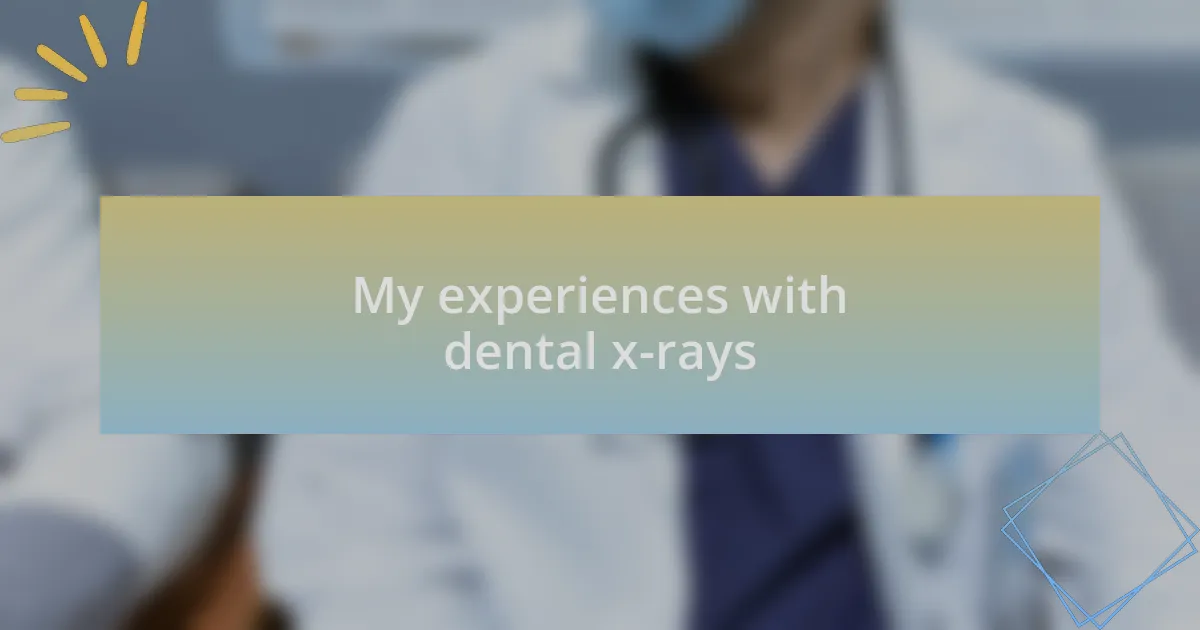
My experiences with dental x-rays
I remember my very first experience with dental X-rays and how it seemed both intimidating and intriguing. As I settled into the chair, I couldn’t help but wonder about all the unseen things happening in my mouth. It struck me that these images could reveal hidden cavities or potential gum issues, and that thought felt a little unsettling yet empowering.
During subsequent visits for X-rays, I noticed how much I had grown accustomed to the routine. The initial anxiety faded, replaced by a sense of curiosity about what the X-rays might unveil. Each time I saw those black-and-white images, I felt more aware of my dental health journey. It was almost like receiving a personalized report card, showing my progress and areas where improvement was needed.
One particularly memorable visit stands out. My dentist pointed out a small area of concern on the X-ray, something I might have missed during a regular check-up. It was a wake-up call, and in that moment, I realized the true value of dental X-rays. Have you ever felt that mix of relief and concern knowing that your dental health is being closely monitored? For me, it was a gentle reminder that prevention is key in maintaining a healthy smile.
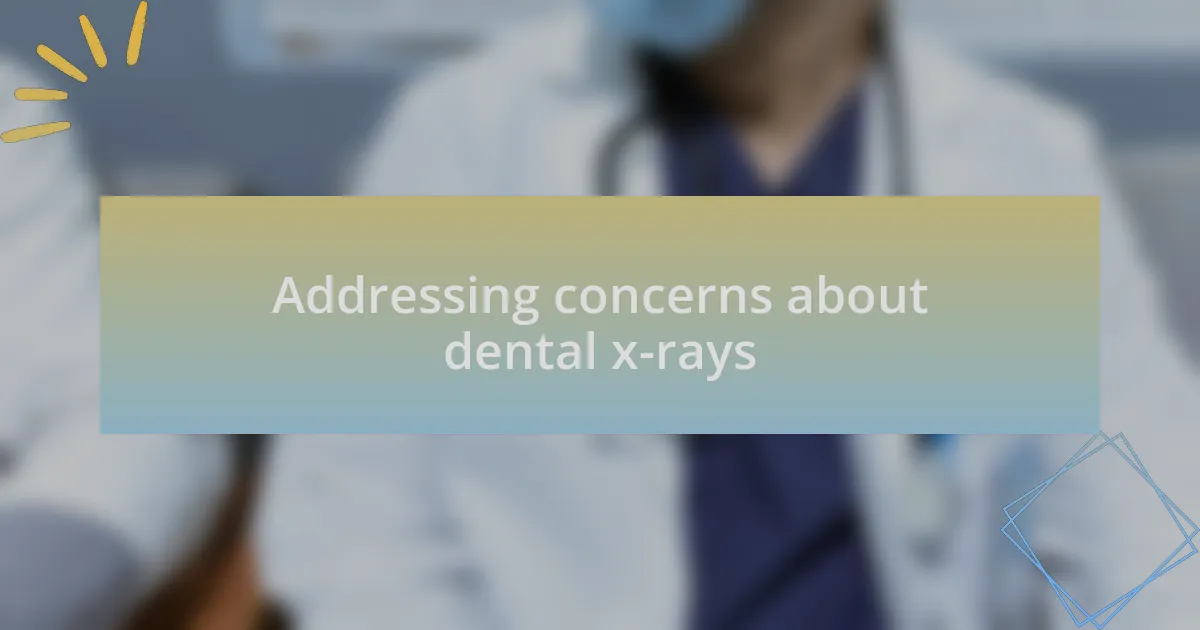
Addressing concerns about dental x-rays
Dental X-rays often raise concerns, especially regarding safety. I remember discussing this with a friend who was hesitant about getting X-rays due to worries about radiation exposure. It’s important to understand that modern dental X-rays use extremely low levels of radiation, making the risk minimal. Knowing this can ease the anxiety and keep the focus on the big picture: maintaining optimal dental health.
In my own experience, I felt a wave of relief after learning about the precautions taken during X-ray procedures. The technician always provided lead aprons and shields to protect my body while capturing those crucial images. It made me realize that while I once feared the unknown, understanding the process has allowed me to appreciate the benefits of these images. How can we weigh risks against the potential to catch issues early? It turns out, knowledge is not just power; it’s peace of mind.
I’ve also encountered friends who thought dental X-rays were unnecessary. I vividly recall a conversation where I shared how an X-ray saved me from an urgent root canal. This incident highlighted the X-rays’ role in preventive care. Isn’t it fascinating how a simple image can make such a difference in our treatment paths? It reinforced my belief that X-rays aren’t just a routine step; they’re a vital tool in safeguarding our dental health.